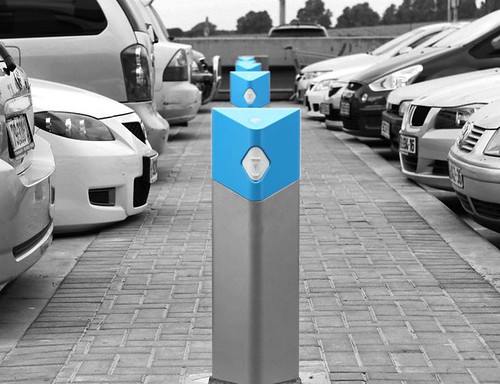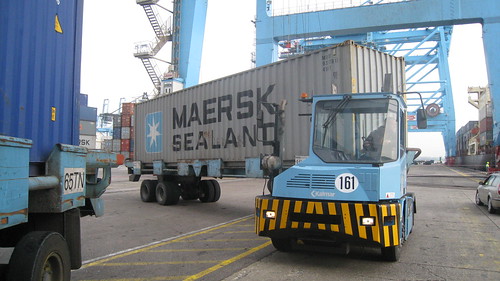Google maps makes inroads into live traffic data market; Adds live traffic conditions data for arterial roads
(Sources contributing to this hybrid report: CNET; Ars Technica; LifeHacker; eweek-Google Watch)
In the movie business, the blockbusters are often reserved for the summer months. Just like the movie-makers, the Googlers are making it a habit to unveil some of their coolest products over the summer months and this year is no exception (as if they are not doing anything cool during the rest of the year).
The Google Maps team has been on quite the tear this summer, enriching its platform and beefing up location-based services, such as Google Latitude. In just the past two months, the search and Web services giant has offered multiple searches for one search destination session, shown users how to get Google Maps on Web sites, and offered a Street View tutorial. Now they are at it again – this time with another awesome feature: live traffic updates for arterial roads in addition to the data it already offers up for major highways.
Google Maps is adding traffic data for side streets starting today, which combined with a the data it already offers up for major highways makes it a “must-have” tool for all roadwarriors. Major “arterial” roads, such as state highways or prominent boulevards in cities, will now have their own color-coded traffic information in Google Maps, giving drivers the option of selecting an alternate route based on current traffic conditions.
So how is Google expanding its traffic reports to side streets? If you’re using Google Maps on your smartphone (with the notable exception of the iPhone, which doesn’t support the feature, according to Google) you’re automatically sending speed data back to Google wherever you go.
The trigger is the “My Location” button in Google Maps, which automatically signs you up for the traffic crowdsourcing program when that button is pressed. In addition, Palm Pre and MyTouch 3G users are automatically enrolled in the traffic crowdsourcing program.
You can opt out of the program, but at the expense of the My Location feature. Hit the “My Location” button again to figure out where you are in an unfamiliar city, and you’re automatically re-enrolled in the program.
Traffic data has been available on major highways for years through Google Maps, but that data is collected from road sensors and private car fleets and is also available to dozens of third-party traffic providers. The number of people using GPS-enabled smartphones with Google Maps installed has dramatically increased since 2007, and many of them may not know that by using the My Location feature, they’re also participating in a traffic-related survey.

Image Courtesy: Google Watch (Eweek) - Traffic conditions snapshot around Microsoft headquarters, Seattle
This is a fantastic feature (assuming you don’t mind the anonymous usage statistics going to Google), and one that’s actually available in some GPS devices already. The drawback on some devices—the iPhone, for example—is that you’d need to use Google Maps in place of another GPS application, and since the iPhone now features turn-by-turn GPS navigation applications, it’s a bit of a sacrifice. Still, if Google were to go the extra mile and turn Google Maps into a turn-by-turn GPS app (something that seems well within reason, considering how much map data they’ve already got), then they’d really be on to something that a lot of us would potentially use.
Not only can you get live traffic updates, Google Maps lets you select options for viewing the average traffic patterns on a specific day and time. Say you’re taking a road trip and you’re leaving on Thursday at 5pm—you can now look up the traffic in advance for planning purposes (see image below to the right).
In addition to the arterial road information, Google has also begun using crowdsourced data for traffic information. If you use Google Maps for mobile with GPS enabled, you can choose to allow Google Maps to send regular updates (anonymously, of course) about where you are and how fast you’re moving.
“When we combine your speed with the speed of other phones on the road, across thousands of phones moving around a city at any given time, we can get a pretty good picture of live traffic conditions,” wrote Google. “We continuously combine this data and send it back to you for free in the Google Maps traffic layers.”
Google assures users that they only use anonymous speed and location information to calculate traffic conditions, and only do so when the user has opted to enable location services on his or her phone.
The problem with the location-based services is that it affects a skittishness in people. Concepts like location-based services that send “bits of data back to Google” tend to make people nervous. Electronic Frontier Foundation has a great report on the intersection of location services and privacy.
“We understand that many people would be concerned about telling the world how fast their car was moving if they also had to tell the world where they were going, so we built privacy protections in from the start,” wrote Dave Barth, product manager for Google Maps. “We only use anonymous speed and location information to calculate traffic conditions, and only do so when you have chosen to enable location services on your phone.”
Click here to read the entire article.












